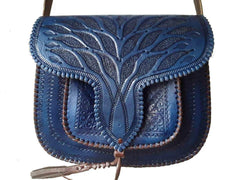Like in urban architecture and interior design, the Andalusian touch is present in the various arts and crafts of Morocco.
In this article, Moroccan Corridor will introduce one of the most attractive music remains and especially the least known in the West, from a highly refined civilization, the Hispano-Maghreb civilization born from the fusion of Arabic and Andalusian cultures, which Morocco has become, the fundamental heir.
Indeed, this region, melting pot of several civilizations resulting in an unprecedented outbreak of a musical art that is experiencing a rapid development for over eight centuries both in Andalusia and in the Maghreb.
Origin
Andalusian classical music was allegedly born in the Emirate of Cordoba (Al-Andalus) in the 9th century. The Arab/ Kurdish or Persian musician (as his origins were not known but all historians agreed that he was of dark skin that's why he was called the blackbird.), residing in Iraq, Ziryâb (d. 857), who later became court musician of Abd al-Rahman II in Cordoba, is sometimes credited with its invention. Later, the poet, composer, and philosopher Ibn Bajjah (d. 1139) of Saragossa is said to have combined the style of Ziryâb with Western approaches to produce a wholly new style that spread across Iberia and North Africa.
Evolution
The Andalusian classical music is very much alive in the Maghreb and its origins go back to the times of Al-Andalus. This musical tradition has evolved differently in the different parts of the Maghreb, being in Morocco where musicologist claim that it has better maintained some of its original characteristics. The cities of Fez and Tetouan are two major centers for the Moroccan Andalusian music (known there as Musiqa Al-Ála).
Andalusian music is a classical tradition that has been maintained orally for hundreds of years and that has a well defined repertoire and set of formalisms. The core-structuring concept is the nawba (named nubah in the south of Morocco). Each nawba is on a tab' (which is similar to the concepts of maqam or mode) and is structured as a sequence of five myazen (plural or mîzân), each one on a particular rhythmic pattern. To perform a complete nawba it would take very long, so in each of the concerts we attended they just played one mîzân of a particular nawba. Each mîzân begins with an instrumental prelude and is followed by a number of sung poems (sana'i) which include instrumental accompaniment and short instrumental interludes.
The instruments of the Andalusian classical orchestras can change a bit but there is a set of core instruments in most of them. The orchestras I heard included voice soloists, oud, rebab, darbouka, tar, qanun, kamenjah (violin and viola), cello, piano, and all the players also sang. The music is fundamentally vocal but the instruments have a very important supporting role and in every concert there were quite a few instrumental solo passages.
The oud used is the arab oud, which is a bit bigger than the turkish one and it is tuned a bit lower. The rebab has two strings and is quite different from the rebabs I have seen in other arab countries . The kamenjah (violin) is the most prominent instrument and the way the performers hold the instrument and their playing technique is quite different from other music traditions. The percussion (darbouka and taarija) has a supporting role, thus it is present all the time. The piano is used by some groups and it is basically used as a monophonic instrument. Most of the instrumental fragments are played by the whole orchestra. The voice is the main component of the music, most of the performers sing together and some passages are sang by a soloist.
Let's discover it!!
Moroccan Corridor invite you to discover an extract of a mix of Moroccan-Andalou & Flamenco music concert hold in Mars 2013 at the "Institut du monde arabe/ IMA" in Paris.
- Moroccan Singer Abderrahim Abdelmoumen,
- Sergio Gomez Delgado,
- & Andalusian group of Granada,
-Taksim violin: Fatine Garti.
Enjoy!






























